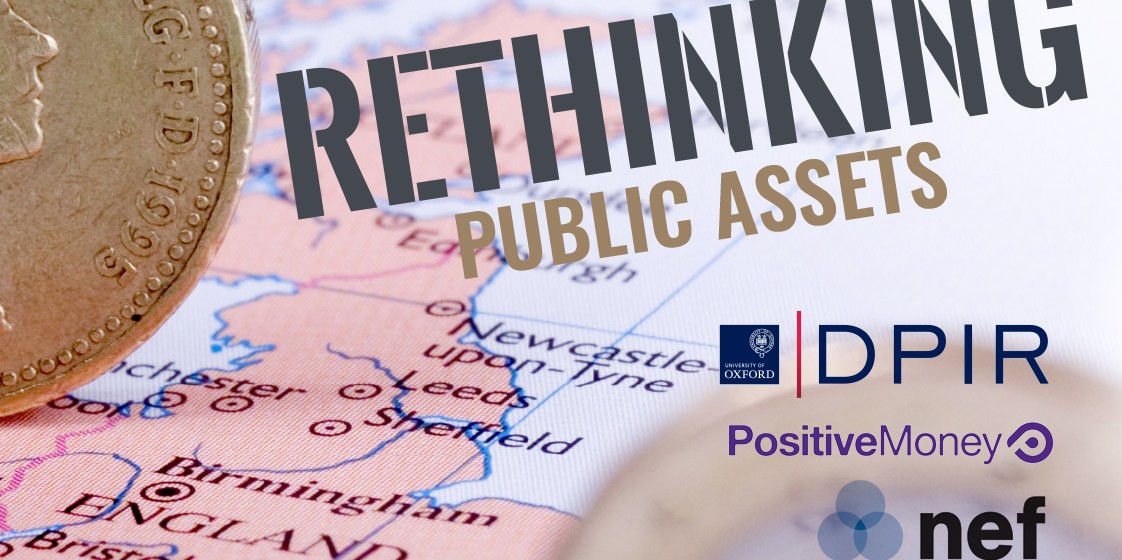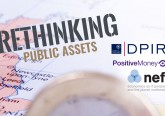Politicians often fail to understand the fundamental difference between household economics and the national economic system. The difference exists because households have to manage as best they can on what they can earn or borrow, whereas Governments have it within their power to create new money.
A recent poll of Parliamentarians, commissioned by Positive Money, asked questions as to how new money is created. One out of ten respondents gave the right answer, two said they did not know and the remaining seven gave the wrong answer. This is not surprising. It is probable that less than 10% of the public understands money creation. As Henry Ford remarked “It is well enough that people of the nation do not understand our banking and monetary system, for if they did, I believe there would be a revolution before tomorrow morning.”
The common belief is that if governments were to be allowed to create new money the result would be hyper-inflation, as happened in Germany after the First World War. However, recent events have demonstrated that it is not only governments, like Zimbabwe, that are capable of causing financial disaster. Bankers have shown that they too can abuse their power to create money, delegated to them by governments. At least Zimbabwe only destroyed its own economy, whereas bankers have shown they can bring the world economy to its knees.
As Keynes pointed out, public expenditure need not be inflationary so long as it increases the efficiency of the economy and raises productivity by making better use of all available resources, both human and natural. Bankers create money out of thin air, for their own profit, at minimum risk and charge interest on it. It is only by chance that the money may go where it is most needed in the national interest and for the public benefit. Adam Smith’s hidden hand has worked well enough for the enrichment of a minority in a world where there seemed to be no limit to natural resources. But planning to accommodate a civilisation of 10 billion people on a finite planet cannot any longer be left to individual self-interest.
The historical record of public banks reveals an impressive story of success. They have shown in practice how it is possible to guide investment to where it is most needed for the long-term public benefit. Perhaps the most famous example is the Reconstruction Finance Corporation (RFC) that Roosevelt created in 1932 to implement the New Deal. The RFC went on to play the central role in mobilising the US economy to transform it into a massive arms industry that enabled the Allies to win the Second World War. The huge wealth of American state assets provided the backing that enabled a publicly owned institution to raise the financial resources to achieve specific objectives – first in creating the essential infrastructure of the national economy and then in transforming that economy into an engine for winning the war.
Global population is heading rapidly towards 10 billion. We are reaching the opposite end of the spectrum from our hunter-gatherer ancestors. Nurturing and caring for the earth’s natural capital is now our prime task, if we are to enable future generations to enjoy at least as good a life-style as is possible today. This places a huge burden of responsibility on governments, as free markets do not function for the benefit of future generations. We have to turn to long-term planning rather than rely on crisis management, the most inefficient system of all.
Governments have it in their power to create money and guide its use for the public benefit. They have mostly delegated this power to bankers who use it exclusively for the maximisation of their own profit at minimum risk. But governments still have enormous economic, as well as political, power in that they control the assets belonging to the state. They can use these assets to provide the backing for investment to achieve vital long-term objectives.
This can be done at both national and regional level, as has been demonstrated, not just by the RFC, but also by numerous other examples that are active today or in the recent past. These range from the Japan Post Bank and the Commonwealth Bank of Australia to the Sparkassen and the KfW in Germany and, in the US, the Bank of North Dakota. These and similar public banks have been, and are being, fiercely attacked by the vested interests in private sector banking and corporations, who rightly see public banks as a threat to their financial dominance. Everything depends on their survival and replication. How best to mobilise this public wealth for the public benefit is the subject of these seminars.
James Skinner is an economist and emeritus chairman of the New Economics Foundation. He read PPE at New College, Oxford.
This article is part of a blog series building on three seminars co-hosted by Oxford’s Department of Politics and International Relations, the New Economics Foundation and Positive Money.
This blog series aims to inform public and policy debate on the role of public assets in our political economy. The series and related seminars were supported by the University of Oxford’s ESRC Impact Acceleration Account.




